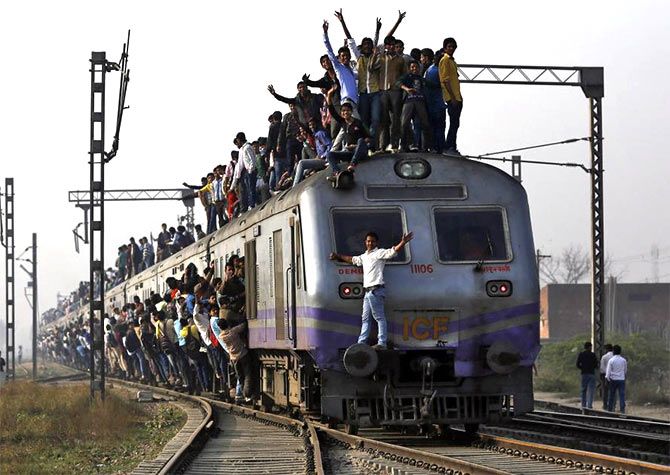Experts say Railway Minister Prabhu displays a clear intent of reforms but has not been able to fully shake-up the mammoth railway system.

Prime Minister Narendra Modi does not seem to be too happy with the performance of Indian Railways.
While chairing a high-level meeting with the rail ministry’s top officials last Monday, the PM asked them to “substantially raise” their levels of ambition on key projects, including redevelopment of 400 stations.
According to an Indian Express report, the PM’s unhappiness spans across other marquee initiatives, too.
Modi is learnt to have complained there was hardly any “visible progress” on setting up a proposed Rail University, using advertisements for generating revenues, and lack of creative utilisation of rail infrastructure for revenue.
Following up on the flak received from the PM, the ministry is understood to have issued instructions to take immediate action to ensure perceptible progress. It is not the first time that the ministry has been pulled up by the PM.
The Prime Minister’s Office had last year expressed concern over the lack of spending on key projects.
A rail ministry spokesperson could not be contacted for comment.
So, is Railways really faltering on performance delivery like never before?
Or is it that Modi’s expectations from Rail Minister Suresh Prabhakar Prabhu are too high?
Last week, the rail ministry had issued an exhaustive list of achievements made by the Indian Railways in the past two years.
The list, including 138 items across key functional areas of passenger amenities, Digital India initiatives, infrastructure creation, support for Make in India initiatives, railway reforms, green initiatives, cleanliness, connectivity in the Northeast, public-private partnership in railway projects, freight, and safety.
The station redevelopment initiative had figured in the ministry’s list.
“Redevelopment of 400 stations to be developed on e-bidding on as-is-where-is basis; 10 stations handed over to IRSDC (Indian Railway Stations Development Corporation),” the ministry stated as one of the achievements.
The Union Cabinet, while approving the station redevelopment scheme in July last year, had cleared open bidding as the method of development.
The ministry’s achievement lies in “handing over” 10 stations to IRSDC in one year since then.
A look at the activities of IRSDC over the past few months suggests work in progress.
The company is working on redeveloping seven stations, including Anand Vihar, Bijwasan, Chandigarh, Habibganj (Bhopal), Shivaji Nagar, Surat and Mohali.
The request for qualification (RFQ) for the Anand Vihar project was opened in February and bids submitted by 13 companies are currently being evaluated.
Bijwasan’s RFQ was opened in March and bids placed by nine firms are being evaluated.
For the redevelopment of Surat, the ministry has invited applications for setting up a multi-modal transport hub.
Besides, two pre-bid conferences were held last month, which witnessed participation from 38 developers.
Eight firms submitted applications last month for the Gandhinagar station, and a developer was appointed in March for the redevelopment of Habibganj station following a bidding process.
Experts say Prabhu displays a clear intent of reforms but has not been able to fully shake-up the mammoth railway system.
“For Prabhu, the main challenge is to bring about institution-level reforms of the kind seen in the roads ministry,” said a senior analyst from an accounting and consultancy firm.
He added a large part of the roads ministry’s success in turning around the sector lies in a strong independent body in National Highways Authority of India to oversee major projects.
“On the other hand, railway PSUs do not yet enjoy enough autonomy,” he said.











 © 2025
© 2025